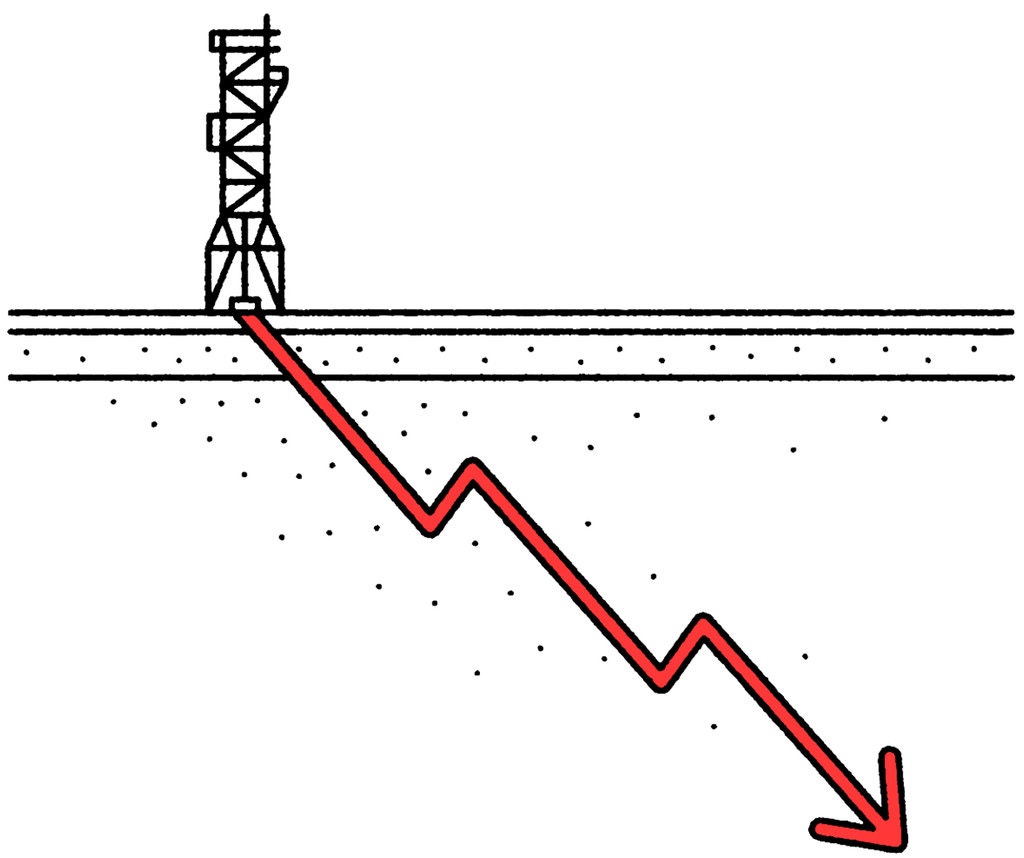
France’s Credit Agricole to stop financing new fossil fuel projects by Mathieu Rosemain and Sudip Kar-Gupta, December 14, 2023, Reuters
France’s second-largest listed bank, said on Thursday it would stop financing new fossil fuel extraction projects and publish its exposure to that sector as part of its new climate targets.
The announcement follows the deal struck at the COP28 climate summit among representatives of nearly 200 countries, who agreed to begin reducing global consumption of fossil fuels to avert the worst of climate change.
Credit Agricole, which counts French oil major TotalEnergies (TTEF.PA) among its top clients, said it would cut financed carbon emissions tied to the oil and gas sectors by 75% by 2030, compared with a previously announced target of a 30% reduction.
“Even if the signal is a good one and is welcome, the methodology remains very incomplete, one could even say bad, in terms of claiming to be aligned with a target of limiting higher temperatures by 1.5 degrees Celsius,” said Lucie Pinson from Reclaim Finance, commenting on Credit Agricole’s plans.
More European banks are pledging to reduce their financing of fossil fuels, incentivised by new European rules that will shine a light on how green their businesses are and pressure from campaign groups and some shareholders. British banks NatWest and HSBC, and Dutch bank ING, are among those to have announced restrictions on such lending.
U.S. and Asian lenders, however, remain the far bigger backers of fossil fuels.
Barclays is the only European lender in the top ten financiers of fossil fuels between 2016 and 2022, with JPMorgan, Citi and Wells Fargo the three biggest, according to the NGO-authored Banking on Climate Chaos report.
Credit Agricole also said it would triple its annual financing of renewable energy projects by 2030 to 3 billion euros ($3.3 billion) from 1 billion euros currently.
It added it would hike by 80% its investment bank unit’s exposure to low-carbon energies between 2020 and 2025, with the aim of reaching 13.3 billion euros.
Credit Agricole’s new goals are part of the so-called “net zero 2050 scenario”, under which the world aims to achieve net-zero carbon emissions by the middle of the century.
Environmental advocacy groups have criticised Credit Agricole for not doing enough to reduce its credit exposure to the oil and gas sectors, pressing the bank to increase transparency on these issues.
Credit Agricole said it would report its total exposure to existing fossil extraction projects in which it is still committed in the first quarter of 2024.
It added that, regarding its financing of energy companies, it would have no corporate financing of independent producers dedicated exclusively to the exploration or production of oil and gas.
“In a context of climate emergency, we need to amplify our commitment towards measures supporting the transformation of society,” Chief Executive Philippe Brassac said.
($1 = 0.9176 euros)
Opec+ now controls barely half of oil market, says IEA, Energy watchdog says demand growth ‘drastically’ falling this quarter by Ian Johnston and David Sheppard, Dec 14, 2023, Financial Times
Opec+ now controls barely half of global oil production as demand growth slows “drastically” and US output reaches new highs, the west’s energy watchdog said on Thursday.
The International Energy Agency said recent production cuts to prop up the oil price have reduced the market share of Opec+ to just 51 per cent — the lowest since the expanded cartel was set up in 2016.
Despite the output cuts, oil prices are lingering below $75 a barrel, compared with nearly $100 in September, with the IEA noting that “global oil demand growth will slow drastically” in the current quarter.
Citing macroeconomic factors such as higher interest rates and a “fading rebound from Covid-induced lows”, it said demand would be almost 400,000 barrels a day lower for the quarter than it had anticipated just last month.
The watchdog added that the sway of Opec+ over the market could fall further next year, because increases in production by non-members are expected to be enough to meet the entire rise in global demand forecast for 2024.
It noted that record supply from the US and rising output from producers such as Guyana and Brazil would increase oil supplied by non-Opec countries by 1.2mn b/d in 2024 — more than the 1.1mn b/d forecast for demand growth.
The cartel — which includes Opec members plus countries such as Russia, Mexico and Azerbaijan — has announced several rounds of supply cuts over the past 14 months. But its efforts to support prices above $80 a barrel have been hindered by production by non-members.
The IEA says the US, which is already producing 20mn b/d, will remain the leading source of supply growth next year.
“The continued rise in output and slowing demand growth will complicate efforts by key producers to defend their market share and maintain elevated oil prices,” the IEA said.
The IEA now expects oil demand growth to tumble from a year-on-year rate of 2.8mn b/d in the third quarter of 2023 to 1.9mn b/d in this quarter.
It had previously forecast that demand growth this quarter would be 2.3mn b/d.
The watchdog added that more than half of this revision was due to weaker demand in Europe, “where unprecedented rate hikes in 2022-23 are working their way through an already stagnant manufacturing sector”.
The agency also forecasts weaker demand for the Middle East and Russia, in an indication of the breadth of the economic slowdown.
But it expects global oil demand to increase by 130,000 b/d more than previously projected in 2024, adding that a “soft landing” in the US was “coming into view”.
In such a scenario, the US Federal Reserve would succeed in bringing inflation back towards its 2 per cent target without tipping the world’s largest economy into a recession.
Oil investors to usher in 2024 amid oversupply, demand concerns by Muyu Xu, Stephanie Kelly and Alex Lawler, December 14, 2023, Reuters
Oil investors will usher in 2024 with gnawing concerns about oversupply, slowing economic growth and simmering Middle East tension that could spark price volatility.
Benchmark Brent has averaged around $80 a barrel this year, after a volatile 2022 in which prices surged above $100 after Russian supplies were disrupted following the start of the Ukraine war.
Prices have been capped by a strong dollar and robust non-OPEC output despite demand hitting an all-time high of more than 100 million barrels per day (bpd).
A Reuters survey of 30 forecasts from economists and analysts sees Brent crude averaging $84.43 a barrel in 2024.
Those expectations come despite demand growth forecasts which range from 1.1 million bpd by the International Energy Agency to 2.25 million bpd expected by the Organization of the Petroleum Exporting Countries (OPEC).
Supply in 2024 is expected to grow by between 1.2 million and 1.9 million bpd, driven by non-OPEC producers, say consultancies Rystad Energy, J.P. Morgan, Kpler and Wood Mackenzie.
“We’re looking for an oversupplied market every quarter of next year,” said Vikas Dwivedi, a global energy strategist at Macquarie.
Here’s a look at the key factors to watch in 2024.
OPEC+ COMPLIANCE:
Investors are eyeing first-quarter supply data to see whether OPEC and its allies, known as OPEC+, followed through on their planned 2.2 million bpd in voluntary output cuts.
If the group complies, it could lead to a small deficit of less than 500,000 bpd, ANZ said.
WoodMac’s Ann-Louise Hittle said: “The first quarter will be key because we can assess adherence to the OPEC+ voluntary supply cuts.”
OPEC+ would not need to extend their voluntary cuts beyond the first quarter based on Woodmac’s current demand forecast, she added.
Energy Aspects expects Saudi Arabia to taper its cut over the second quarter after it referred to restoring supply gradually, but added that did not prevent Saudi from extending its cuts in full again if required.
WILD CARDS – RUSSIA, IRAN, VENEZUELA:
Venezuelan oil has returned to global markets since Washington suspended sanctions on the OPEC producer for six months, until April.
Another six-month extension is likely as long as President Nicolas Maduro’s government sticks to an electoral roadmap agreed with the opposition for a presidential election, JP Morgan analysts said.
“Late 2024 presidential elections in both countries would determine the longer-term fate of U.S. sanctions and Venezuelan oil production,” they added.
The lifting of sanctions on state-run oil company PDVSA will gradually increase Venezuelan oil output from 760,000 bpd in 2023 to 880,000 bpd in 2024 and 963,000 bpd in 2025, JP Morgan said.
The resumption of Venezuela’s heavy crude supply to the United States and India may dampen demand for rival grades such as Iraq’s Basrah Heavy and Canada’s Cold Lake, traders said.
More U.S. crude could be available for exports to Asia as Gulf Coast refiners process more Venezuelan oil, they said.
Analysts expect Russian and Iranian oil to keep flowing to global markets despite sanctions, holding down pump prices ahead of the U.S. elections.
Iran has targeted crude output of 3.6 million bpd by March 2024, up from 3.4 million bpd now.
NEW REFINERIES:
Tightness in refined products, particularly diesel in the aftermath of Russia’s Ukraine invasion, is set to ease with more than 1 million bpd of new refining capacity coming online in China, India, Mexico, the Middle East and Nigeria in 2024, analysts said.
These include Chinese newcomer Yulong Petrochemical, expansions at India’s Panipat and Koyali refineries, Nigeria’s Dangote project and Mexico’s Dos Bocas.
CRUDE QUALITY MISMATCH:
Non-OPEC producers led by Brazil, Guyana and the United States are set to drive output growth in 2024, boosting supply of light sweet oil, while medium sour grades are set to stay tight on OPEC+ cuts.
This could narrow price spreads between crude grades globally, Macquarie’s Dwivedi said, with medium grade crude trading close to parity with light sweet from a typical discount of $2-$4 a barrel, while the discount for heavy versus light crude could narrow to about $4 a barrel from $8 previously.
A big portion of refining capacity in China, India and the United States is designed to run on heavier crude, which could tighten in supply when refineries resume operations after second-quarter maintenance.
“This complicates refinery yield optimisation and limits operational flexibility for expanding product supply,” said Rystad Energy’s Mukesh Sahdev.
WoodMac analyst Alan Gelder said China and India would increasingly source their crude from the Atlantic Basin, with Asia and the United States competing for heavy barrels.
The United States and India could turn to Venezuela for more heavy crude, while China and India are anticipated to continue relying on supplies from Russia and Iran, analysts said.
“India is arguably in the best position … so the relative profitability of Indian operations will improve even further,” said Kpler analyst Viktor Katona.

Refer also to:

